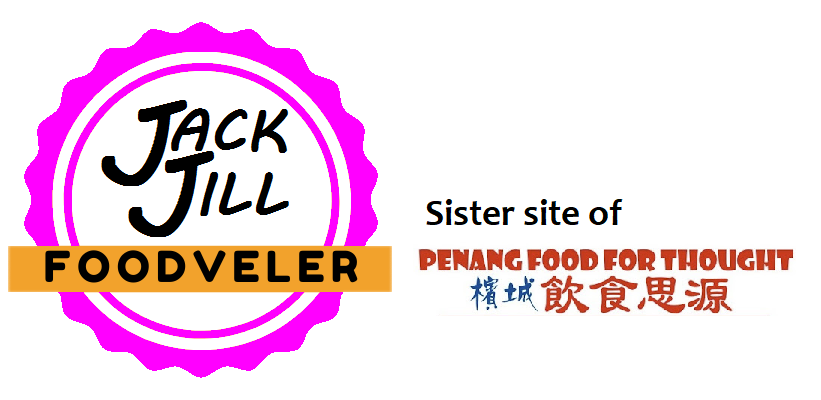Special thanks to Ngon for extending this food review invitation.
Update: This business has ceased its operations.
Ngon Vietnamese Café & Restaurant is a new restaurant at Love Lane, occupying the former location of Jeeves. Although Vietnam is our neighboring country, it is unfortunate that there are not many Vietnamese eateries in Penang. Therefore, I feel that the opening of this new restaurant is certainly welcoming.
The kitchen is staffed by ethnic Vietnamese chefs. Although they hail from southern Vietnam, they are also well-versed in northern Vietnamese cuisine as well as several Cambodian dishes. By the way, the Vietnamese word “ngôn” means “delicious”, and it was their idea to name the restaurant so.
One of the most recognizable Vietnamese appetizer is Goi Cuon (Gỏi Cuốn, RM9.90). Goi Cuon consists of shrimps, lettuce and rice vermicelli (bún) wrapped in translucent skin made from rice paper (bánh tráng). Unlike Chinese spring rolls, Goi Cuon is not cooked after it is made into rolls.
The ingredients in the rolls are quite juicy, providing much needed moisture to the drier skin. However, the skin becomes quite tough and leathery after a while. Therefore, it is advisable to consume the rolls as soon as they are served. Goi Cuon is served with Vietnamese hoisin sauce (tương xào), which is sweet and savory in flavor.
The next dish is Cha Gio Chien (Chả Giò Chiên, RM12.00). Filled with minced pork, the spring rolls are deep-fried until the rice paper becomes crispy. This popular appetizer or side dish is often served with chili sauce.
Banh Khot (Bánh Khọt, RM12.50) is a popular snack dish in southern Vietnam. The bite-size pancakes are made from flour batter mixed with turmeric and coconut cream, then topped with shrimps and chopped scallion. At Ngon, Banh Khot is available in orders of 7 pieces each. But for the purpose of this food tasting session, the chef specially prepared a plate of 3 pieces.
Banh Khot is easily my favorite appetizer today. I love the aroma and pleasant sweetness of its coconut content. On the side is nước chấm, a type of sweet-tangy dipping sauce which contains julienned carrots, daikon and chili.
Banh Xeo (Bánh Xèo, RM13.50) is known as “sizzling cake” due to the sizzling sound produced when rice flour batter is fried in oil. The crispy rice flour crêpe is filled with cooked pork, shrimps, scallion and bean sprouts.
Banh Xeo is served with an assortment of leafy vegetables such as mustard greens, basil and mint. According to the staff, the proper way to enjoy this dish is by plucking a piece of crêpe with some fillings, wrap them with a vegetable leaf, dip in nước chấm sauce, and then eat them as a whole.
Moving to main dishes, Com Xao (Cốm Xào, RM9.00) is fried rice with a strong dose of turmeric. When served hot from the fryer, the distinctive fragrance of turmeric stimulates appetite. I also enjoy the fiery aroma that this dish offers.
Fried rice is also flavored with sweetness of Chinese sausages (Lạp Xưởng). Eggs and chili pepper also contribute to well-balanced flavor. I think this is a nice dish especially if you are particularly fond of turmeric.
Pho Bo (Phở Bò, RM15.00) is a popular Vietnamese soup dish with contains rice noodles (bánh phở) and beef slices. The broth is prepared by simmering beef bones for several hours. Besides scallions and onions in the soup, there is also a plate of raw bean sprouts and Thai basil (húng quế) on the side. Personally, I prefer the broth to be cooked longer so that it is richer in meaty flavor.
Moving on, Mi Xao Gion (Mì Xaò Giòn, RM14.90) is prepared in a similar way as Hong Kong-style chow mein (港式炒面). Like its Cantonese counterpart, egg noodle is immersed in scalding oil such that it attains delightful crisp. Then, the noodle is topped with thick, sweet sauce made from corn starch.
Mi Xao Gion is served with shrimps, mushrooms, choy sum (cải ngọt) and cabbage, which I think work well with the noodle. In addition, it is surprising that the noodle remains crispy even after being soaked in gravy for some time. However, I prefer the gravy to be less intense in terms of sweetness, such that the noodles and other ingredients play a stronger role.
To conclude the meal, a cup of Vietnamese Coffee (Cà Phê Sữa, RM8.80) is works the best. As per tradition, the hot version of this drink is served in a metal drip filter called cà phê phin. Ground coffee is placed in the filter and hot water is poured over. Filtered coffee accumulates in the glass below, where it mixes with condensed milk.
I appreciate coffee from Vietnam for its soothing aroma and pleasant bitterness. Dark roast gives the coffee distinctively bold flavor, which is truly unique to Vietnamese coffee. If you are an avid coffee drinker, you should try Vietnamese Coffee with less or no condensed milk. This allows the coffee to unleash its true strength.
Overall, most dishes at Ngon strike a chord with my adventurous palate. Contrary to popular belief, Vietnamese cuisine is not necessarily bland or unexciting. In fact, Vietnam’s unique geography and historical division allows the nation to develop a rather diverse range of delicacies that are still unheard of in Penang.
Name: Ngon Vietnamese Café & Restaurant
Address: 71, Lorong Love, 10200 George Town, Pulau Pinang
Contact: 04-261-7172
Business hours: 12:00pm-10:00pm, closed on Mondays
Website: https://www.facebook.com/Ngon-Restaurant-907633012668237
Coordinates: 5.41868 N, 100.33650 E
Directions: From Chulia Street (Lebuh Chulia), turn into Love Lane. Ngon is one of the shops on the right, somewhat opposite of Selfie Coffee. Street parking is available but limited during certain hours. There is also a private car park further down Love Lane on the right, just before reaching Reggae Penang.



